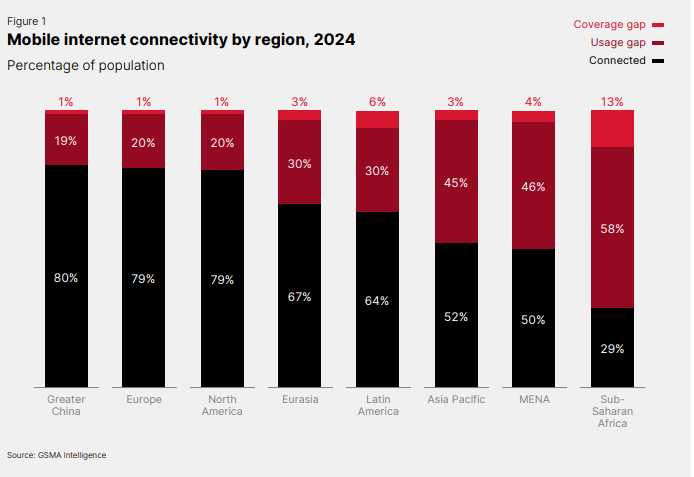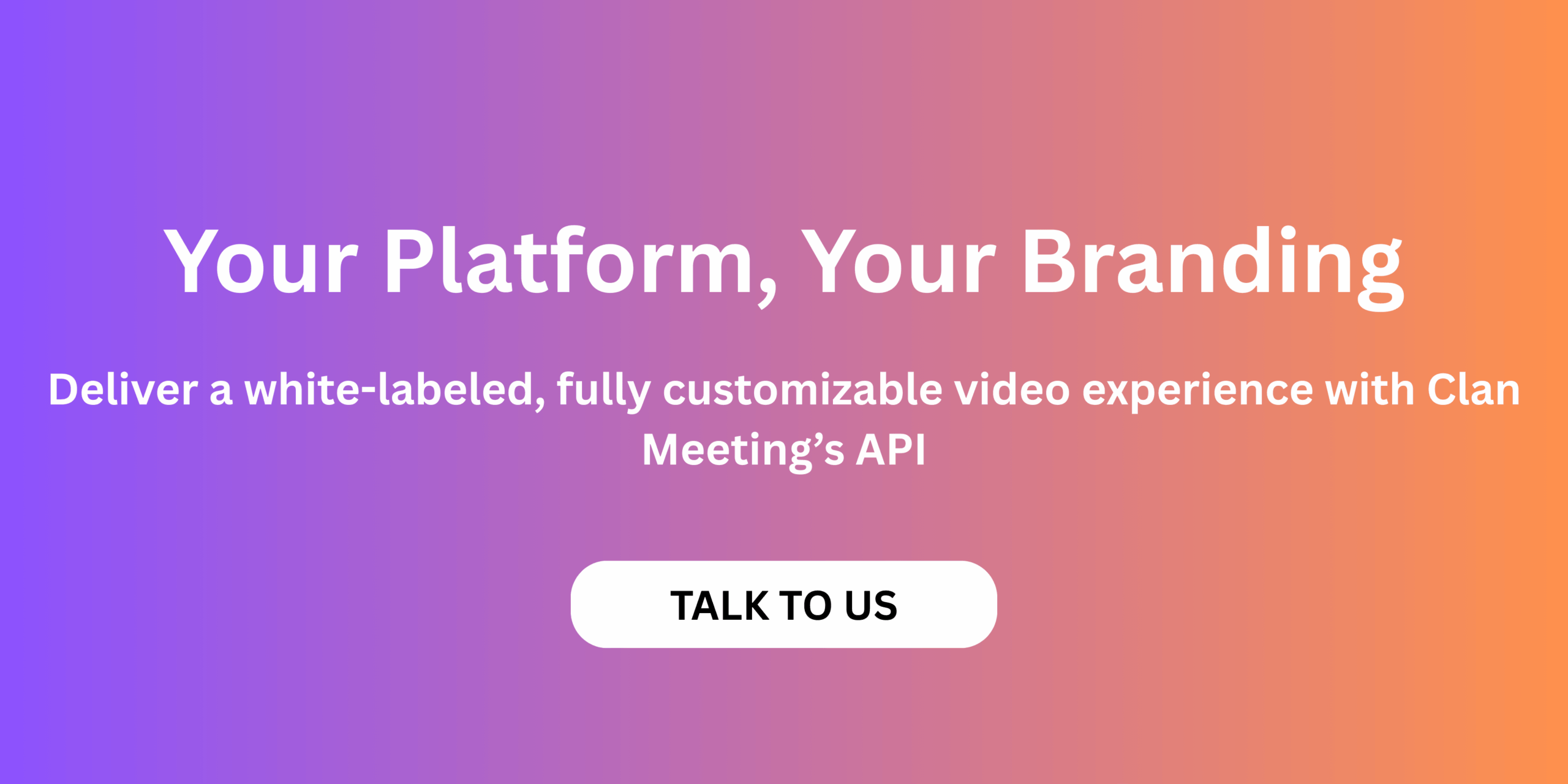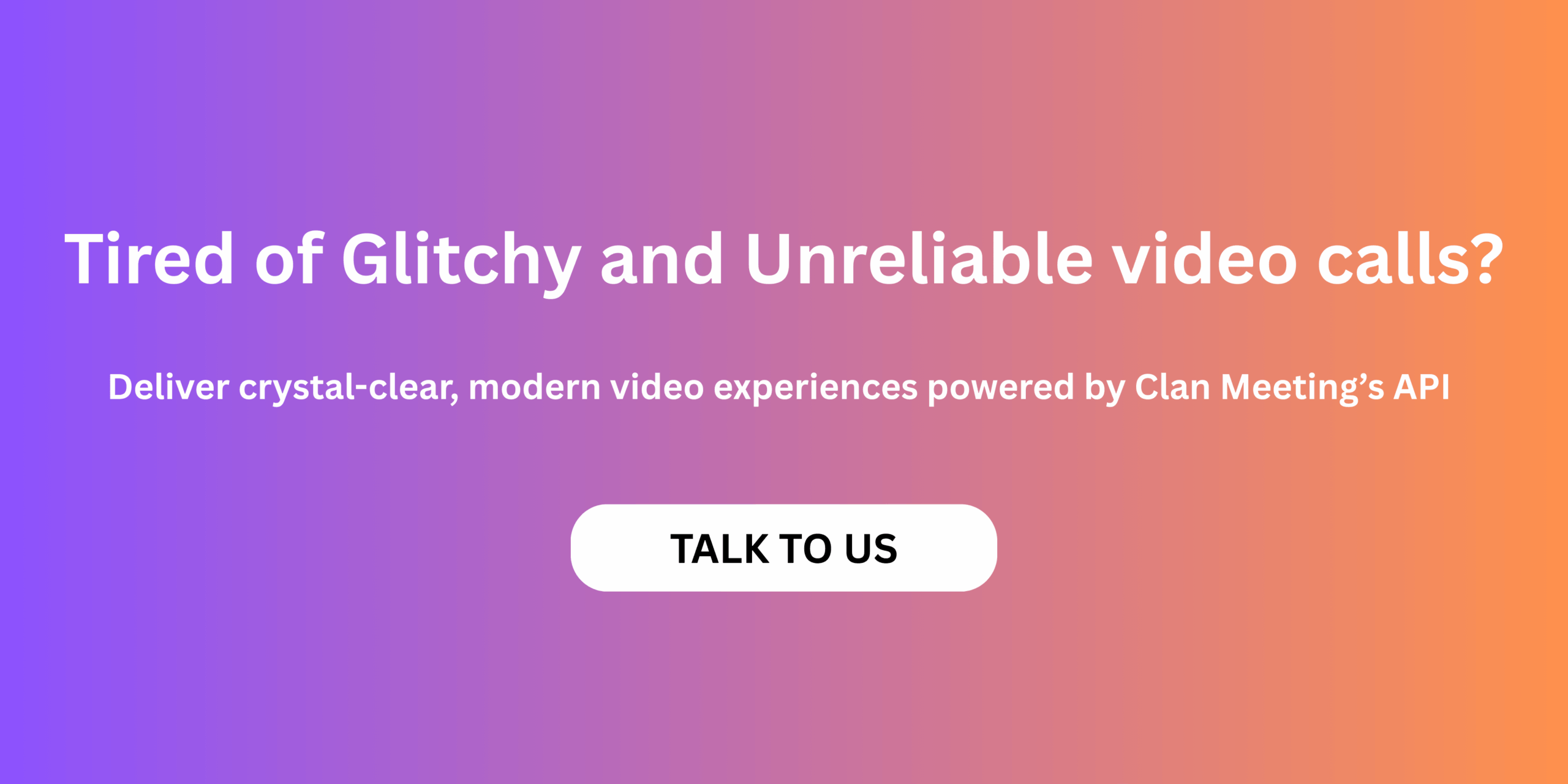The pandemic changed the way organizations think about recruitment. Video interviews, once a convenient add-on, became the default almost overnight.
That shift created a new challenge - ensuring every candidate, regardless of where they live or the quality of their connection , can present their best self.
In this post we dig into the world of low‑bandwidth video SDKs, why they matter for recruiters pursuing a global talent pool, and how to design inclusive virtual interviews that minimise drop‑offs.
The Connectivity Gap Is Still Real
By the end of 2023, 57 % of the world’s population (about 4.6 billion people) used mobile internet, according to the GSMA’s State of Mobile Internet Connectivity 2024 report. (Source)
The same report notes that 96 % of humanity lives within the footprint of a mobile broadband network, but a staggering 3.1 billion people remain offline despite coverage. That usage gap dwarfs the coverage gap - only 4 % of the population lacks access entirely and is especially acute in low and middle‑income countries (LMICs).
Average download speeds tell a similar story.
Global averages rose from 34 to 48 Mbps, yet speeds remain below 20 Mbps in least‑developed countries and small island states. In other words, most of the world is online, but network quality varies dramatically.
For recruitment teams, these are not just numbers.
Open your funnel to emerging markets and you will find yourself interviewing candidates on 3G networks running at 1–3 Mbps. They may be using older smartphones, competing with family members for shared bandwidth, or paying for data by the megabyte.
If your video platform assumes everyone is sitting on a fibre network or 5G, you risk losing strong candidates before the conversation even begins.
Drop‑Offs Are a Real and Costly Problem
Virtual interviews were introduced as a way to simplify hiring but they often create their own kind of friction.
A 2025 survey on hiring practices found that 62 % of candidates experience technical issues during online interviews, including poor internet connections, audio glitches and software malfunctions. (Source)
Nearly 45 % of interviewers admitted they make judgments based on video quality, background or even clothing and 35 % of candidates from lower‑income backgrounds feel disadvantaged by limited access to reliable internet.
This shows that poor quality is not just inconvenient - it can tremendously slow down the hiring process and also, can hurt the brand reputation.
In competitive markets, candidates do not tolerate repeated technical hurdles and they share their frustrations with peers or over social media.
So, for companies that want to hire the best talent in the market, the responsibility goes beyond sourcing and assessment. It means building interview experiences that candidates can actually complete, no matter their location, device, or network conditions.
What Low Bandwidth Means for Video SDKs
A video SDK provides the building blocks that allow developers to embed live video into their applications.
It takes care of networking, encoding, rendering, and user interface, so that product teams do not have to start from scratch.
But not all SDKs are designed with the same priorities. For global recruitment, the most important measure is how well it performs under constrained networks.
Video quality can be influenced by several factors at once- bandwidth, latency, CPU usage, and the quality of the candidate’s device. Let's look at couple of ways to handle such issues -
- Adaptive bitrate streaming (ABR) - ABR changes the resolution and frame rate of calls on the fly to match the available bandwidth, so they don't have to be locked to one fixed quality. This stops screens from freezing and buffering that never ends, even if the connection slows to just a few megabits per second
- Intelligent bandwidth management - Methods like jitter buffering, packet loss recovery, and clever server routing assist keep things running smoothly. Even when the network is not always stable, they make sure the call feels stable instead than fragile.
- Prioritizing audio over video - In an interview, what is said is more important than how well the video looks. A well-designed SDK lowers the quality of the video for a short time to maintain the audio clear which keeps the conversation going.
- Regional server selection - Latency might make a chat uncomfortable. Connecting people to the nearest server instead of one on the other side of the world cuts down on delays and keeps replies natural.
- Efficient Use of Resources - Using less bandwidth also minimizes the stress on the CPU and memory. That can make the difference between a smooth interview and a crash on older laptops or mid-range phones. It also stops the battery from draining too quickly during long sessions.
- Fallback modes - If things get too difficult, candidates can choose to switch to audio only mode or send asynchronous responses. This way, no one gets punished for having bad internet connections.
These methods work together to construct a barrier between the faulty conditions of the real world and the actual interview. And, the candidate stays focused on the conversation while the technology quietly does the heavy lifting in the background.
Choosing and Configuring a Low‑Bandwidth Video SDK
Selecting a video SDK for global recruitment is not only about what the technology can do in theory, but how it behaves in practice and how easily it fits into your existing hiring workflows.
Once the basics like adaptive bitrate, audio prioritization and regional routing are in place, the next set of questions should guide your choice of the solution you choose -
- A good SDK should show you real-time stats like resolution, frame rate, bitrate, jitter, and packet loss so you can tell when things are going wrong. It should also let you show applicants the information in a way they can comprehend, with simple instructions like "try moving closer to your router" or "switch to audio for now."
- Even the best networks fail and hence, give candidates an option to continue with audio-only, or to record responses asynchronously if a live session cannot be completed. This stops interviews from falling apart completely and makes sure that people are judged on their skills and not on how good their internet connection is.
- You should never have to give up privacy for bandwidth optimization, so be sure the SDK supports end-to-end encryption and follows local data laws, especially in areas with severe residency restrictions.
- Recruitment teams already rely on applicant tracking systems (ATS), coding platforms, and assessment tools. An SDK that provides webhooks, APIs, and lightweight integration saves time for engineers and creates a smoother experience for both candidates and interviewers.
So, don't only look at the list of features when you examine a video SDK. Check how well it handles the weakest links, like networks that are not stable, older devices, and routes with high latency. Also, see how easy it is to set up to meet the fairness and dependability needs of your hiring process.
Designing an Inclusive Interview Process
Technology will always set the stage but the way interviews are designed is what determines whether candidates feel included or excluded.
Even the most resilient SDK cannot fix a process that ignores real-world constraints. Here are a practical steps to handle these corner cases -
- Prepare candidates in advance - Get candidates ready ahead of time by giving them a link to the test and basic instructions. A fast check makes them feel more sure of themselves and avoids surprises on the day of the interview
- Be Flexible - Bandwidth is not always within someone’s control. Allow candidates to schedule their interviews at different times or in other formats based on their network availability.
- Set the interviewer expectations right - A blurry video or momentary lag should not be taken as an indicator of competence - accept the fact that it can happen to anyone. Invest time in training interviewers to look past these technical hick-ups and focus on the core skill set for which the candidates is being considered.
- Provide support - A backup help line or even minor things like paying for mobile data in expensive areas can help ease stress.
- Track and learn - Keep a track of drop-offs, reschedules, and satisfaction. Patterns in these metrics often point to where technology or process adjustments are needed.
These steps are not about adding complexity - they are about removing barriers that have nothing to do with skill.
Technology as a Bridge, Not a Barrier
The digital divide may be shrinking, but it has not disappeared. Millions of capable professionals still work in environments where stable, high-speed internet is a luxury.
For employers who want to compete for the best talent, this reality cannot be ignored.
Low bandwidth optimisation is not just a technical feature - it is a way of ensuring that recruitment is truly global. When adaptive streaming, efficient resource management, and inclusive process design come together, the interview becomes a level playing field.
In practice, this means a candidate in Lagos or Manila should be able to join an interview with the same confidence as one in London or New York. A well-configured video SDK becomes the bridge that makes this possible, transforming what could be a frustrating obstacle course into a smooth experience.
As more candidates come online and distributed work becomes the norm, investing in resilient video infrastructure is no longer optional. It is what ensures that no one drops off the call or out of the hiring funnel simply because of where they live.
The future of recruitment is global, and the technology that powers it should reflect that.
Frequently Asked Questions
1. Why is low bandwidth such an important factor in video interviews?
Because a large share of the global workforce connects from regions where high-speed internet is not the norm. If video platforms assume fibre or 5G access, candidates on slower or unstable connections risk being excluded from opportunities despite being qualified.
2. How does a video SDK help improve candidate experience under poor connectivity?
A video SDK provides the underlying technology for video calls. Advanced SDKs include features like adaptive bitrate, jitter buffers, and packet loss recovery. These ensure that even when bandwidth dips, candidates can continue the interview smoothly instead of being dropped mid-call.
3. What is adaptive bitrate streaming and why does it matter in recruitment?
Adaptive bitrate streaming automatically adjusts video quality to match the user’s available bandwidth. Instead of freezing or disconnecting when the connection slows, the call continues at a lower resolution. For recruiters, it means candidates can finish their interview even on weak networks.
4. Can low bandwidth optimisation compromise security or data protection?
No. A well-designed video SDK balances efficiency with security. Encryption, regional data residency compliance, and privacy protections should remain intact, even when bandwidth-saving techniques are applied.
5. What should recruiters do beyond choosing the right SDK?
Technology is only part of the solution. Recruiters should design inclusive processes: share test links in advance, allow flexible scheduling, train interviewers to look past video glitches, and provide fallback options like audio-only or asynchronous submissions.
6. How does investing in low bandwidth video SDKs help expand the talent pool?
It allows organisations to fairly engage candidates from emerging markets and remote regions where connectivity may be limited. Instead of losing talent to technical issues, employers can evaluate people on their skills and potential, creating a more diverse and competitive workforce.




